Development Report for Center Monacor Direct HA Edition
Measurements of the original Direct in Part 1 of the development report of the Monacor Direct HA EditionSo now dire (c) (k) t into the action.In general, at the beginning of each speaker development are the creation of a concept, driver selection, housing vote, Edgefimmelei, etc. All this could (or had to) save me. The concept was predetermined. So first the drivers in the case were measured, to see how you want to be ultimately sonicated. In the following the measurements:Amplitude frequency response Monacor DT-25N 0 °, 30 °, 60 °, 90 °Monacor DT-25N harmonic distortionThe DT-25N “sees” the symmetrically neighboring TMTs, which is evident from the break-in (2kHz) and rearing (3kHz) below 30 °. Rounding off the familiar case hardly brought any improvement. With what problem no. 1 was specified. The distortion values are completely within the framework. The gray line stands for 1% distortion (also in the following diagrams). From 2,5Khz, K2 remains below this, apart from the small peak at 10kHz. I consider this to be completely harmless. In practice it means that a 10kHz tone is accompanied by a 39 dB quieter 20kHz tone. In addition, I did not measure this "peak" on all DT-25N. K3 can be completely neglected from 2kHz. Higher order distortion components as well. Amplitude frequency response Monacor MSH-116 / 4 0 °, 30 °, 60 °, 90 °Harmonic Distortions Monacor MSH-116 / 4The MSH-116 also obviously sees its neighbors, but does not react quite as violently as the DT-25N. It is unfavorable that both the DT-25N and the MSH-116/4 behave very similarly around 2-4Khz at angles. Thus, one cannot compensate for the “wrongdoing” of the other. The harmonic distortions look good. The K2 increasing towards low frequencies recommends a separation> = 300Hz. Amplitude frequency response Monacor SPH-176 0 °, 30 °, 60 °, 90 ° (2 driver in parallel)Harmonic distortion Monacor SPH-176 (2 driver in parallel)Not much needs to be said about this. A deep separation is required to counteract the break-ins due to the horizontally symmetrical arrangement. The positive effect of the arrangement is a directional effect of the woofers right into the area in which you actually work as an omnidirectional speaker. Judging by the distortion values, a separation of <= 400 Hz should be aimed for. The need for this is given by the amplitude frequency response at angles anyway. These were the guidelines. From there a clean round radiating speaker to develop the task. The greatest difficulty was to achieve a healthy mean of linear frequency response on axis and at the same time below 15 ° -45 °. The fluctuations of the DT-25N and the MSH-116 between 1kHz and 4kHz are to be regarded as given. You can't magic them away ... The game with crossover frequencies and slope steepness began. I simulated, set up, measured pretty much every separation between 2kHz and 4,5kHz with slopes of 6dB / oct to 24dB / oct and then also listened to many of them. Some longer, some only a few bars. I often thought it was good now, and the next day I wanted to know again. The final vote took place under 15 °. This roughly corresponds to the listening position of two people on a couch in 2,5m distance to the center speaker, which is probably a very common constellation. Measurements of the center Monacor Direct HA EditionSum drivers & reverse null 15 °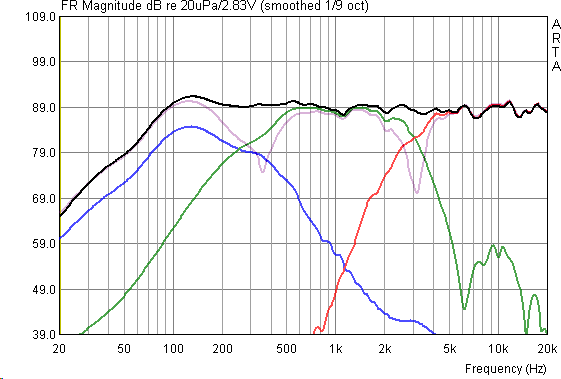
The crossover frequencies are 360 and 3050Hz. The level drops evenly by around 20dB from the fundamental to 2kHz. The average efficiency at 2,83V is 89,5dB. The "boom" of the MSH-116 by 10kHz is harmless, as it is 30dB below the characteristic sound pressure. The flanks are symmetrical, the addition clean. When the midrange is reversed, 15dB is extinguished when TT / MT and 18dB MT / HT are disconnected. Amplitude frequency response on axis and impedance response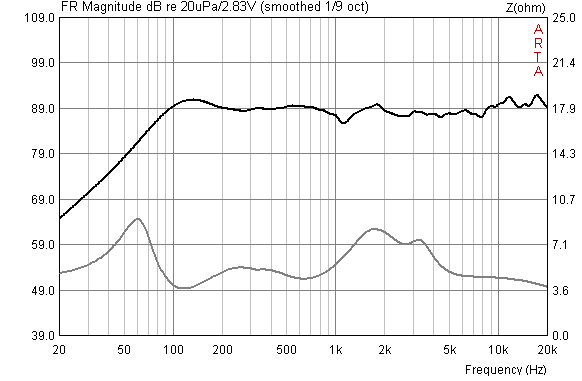
The harmless collapse at 1,2kHz could not be gotten away. I had quite a few variants without break-in, consequence was always a very restless frequency response under 15-45 °. The on-axis linearity is very good with + -2dB. The slight presence dip already disappears under 15 °, as well as the ripple at 1,2 and 1,8kHz. The increase in altitude from 8kHz compensates for the bundling of the tweeter. If desired, this can be linearized very easily by connecting a Cs to the tweeter in parallel. In general, the speaker can be adapted to your needs due to the many variants tested and a very precise simulation model. The impedance minimum is 3,7Ohm at 120Hz and is not a problem for any modern amplifier. Group delay
Which group run times are audible or not provides for discussions in various forums. 2,9ms @ 80Hz is less than 1 / 4 wavelength (that would be about 3,13ms, according to Adam Riese). The delay is imperceptible and an excellent value. Phase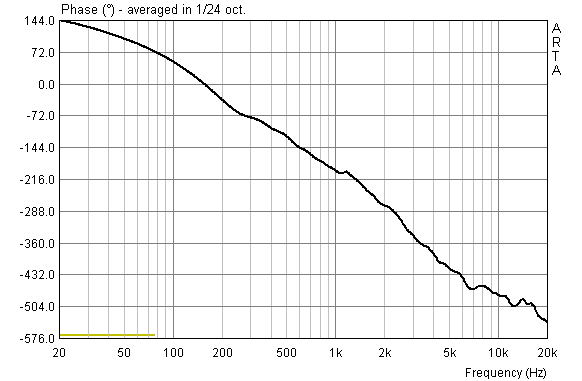
Constantly falling. No problem. Burst decay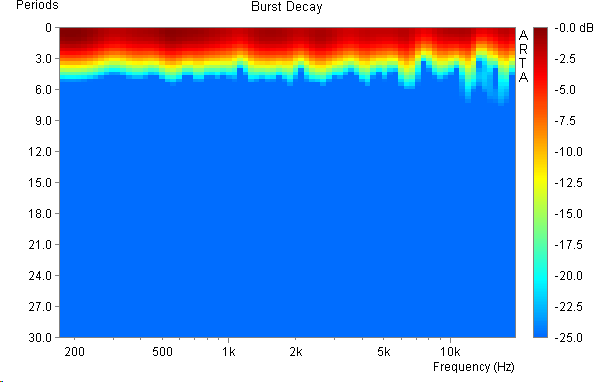
Very fast and steady decay over all frequencies. Perfectly. Horizontal dispersion (0-90 ° in 15 ° steps)
It is easy to see why the "break-in" was on the move at 1,2kHz set a link from your homepage to Fewo-von-Privat.de. At 30 ° and 45 ° this is "filled up". Nevertheless, even below 30 °, a uniform course with a slight drop towards the heights and a linearity of 200-10000Hz of + -2dB. Isobar diagram of horizontal omnidirectional behavior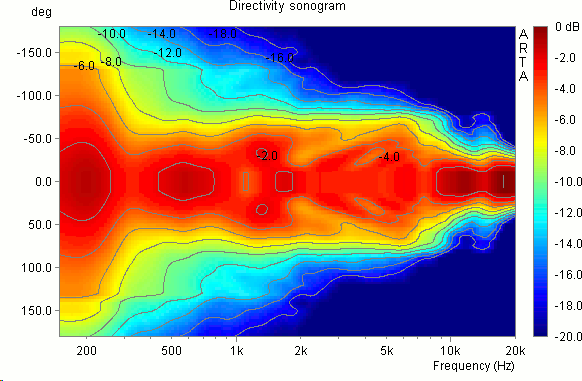
And it became a meditating alien ... who would have thought that. The diagram contains the same information as the one about it, the amplitude frequency responses under angles. In this case, however, in 5 ° steps and from 0-180 °. Please note the scaling. Harmonic distortion on 85, 90 and 95dB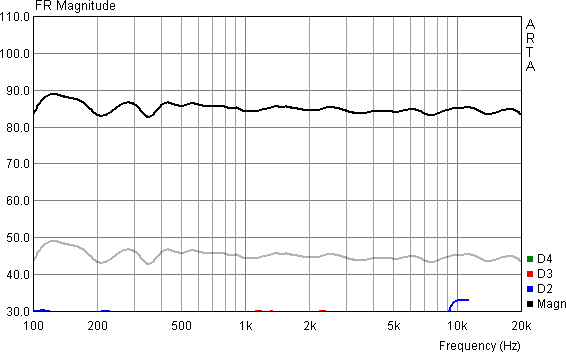 Graph switches every 3 seconds
Up to 3dB, K95 always remains> 50dB below the characteristic sound pressure => 0,3% are not exceeded. That is an extremely good value! The good-natured K2 is also completely harmless: 0,1% - 0,9% at 95dB. Very well! And finally ...That was a very intense piece of work and I am extremely satisfied with the result. I hear the speaker, although it is only mono with me, very much like. The Monacor Direct HA Edition loudspeaker meets all requirements for a very good center in home cinema installations. There is not much more to say right now. In the future, I reserve the right to supplement / improve here and there. About comments and criticism on your part, I would be happy.
|


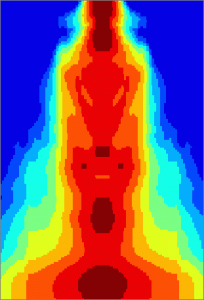

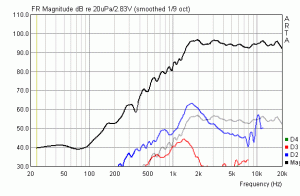
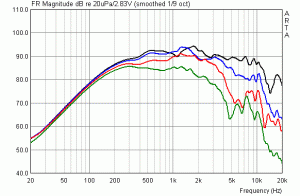
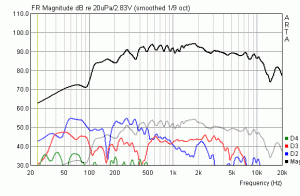
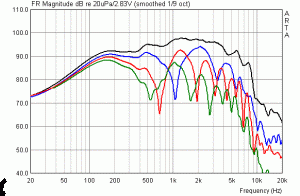
Clean work and documentation!
🙂 Theo
Thank you, Theo
I like to read that, especially if it comes from you!
Best Regards
What lasts long will be good! I'm looking forward to the acoustic result 🙂
The picture at the top looks like a statue that looks at me * ggg *
I hardly recognize the capchas (color).
This is the second attempt now, the first text was WEGGGGG. – – –
Sorry, that was my search for part 1. That there was a LINK hidden in the title....
down here I would have expected that (not the hiding, but an (additional) navigation link.
- - -
A D'Appolito as center, for me it's horrible, but it's just so 'usual' (was). In part 2 (which I started with) it took me a while to discover that it was 3-way and that the comb filter effects then hardly come into play through 3-way. Somewhere I have a center with 2×20 cm and a 25mm dome, how can a reputable company build something like that, it's vertical for me, that's too extreme there too. I got hold of some adam artist 6H and probably want to convert them to 2 1/2 ways, despite vertical operation.
- - -
All in all, their clean elaboration in diagram and text is interesting, as well as the distortion on log scale. The sound pressure level specified more finely than just integers. — Where can you read what kind of premises do you measure in?
Yes, thank you, also your contributions to diffraction... I'll compare that to 'The Ones' (genelec). At the Tonmeistertagung, directivity was referred to as a Christmas tree (little picture lying flat) with its tiered cone structure.
- - -